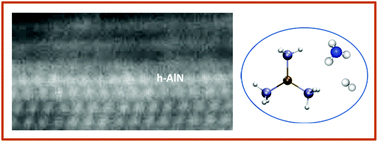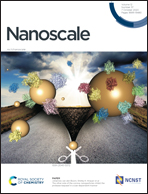Nanoscale phenomena ruling deposition and intercalation of AlN at the graphene/SiC interface†
Abstract
The possibility for kinetic stabilization of prospective 2D AlN was explored by rationalizing metal organic chemical vapor deposition (MOCVD) processes of AlN on epitaxial graphene. From the wide range of temperatures which can be covered in the same MOCVD reactor, the deposition was performed at the selected temperatures of 700, 900, and 1240 °C. The characterization of the structures by atomic force microscopy, electron microscopy and Raman spectroscopy revealed a broad range of surface nucleation and intercalation phenomena. These phenomena included the abundant formation of nucleation sites on graphene, the fragmentation of the graphene layers which accelerated with the deposition temperature, the delivery of excess precursor-derived carbon adatoms to the surface, as well as intercalation of sub-layers of aluminum atoms at the graphene/SiC interface. The conceptual understanding of these nanoscale phenomena was supported by our previous comprehensive ab initio molecular dynamics (AIMD) simulations of the surface reaction of trimethylaluminum, (CH3)3Al, precursor with graphene. A case of applying trimethylindium, (CH3)3In, precursor to epitaxial graphene was considered in a comparative way.



 Please wait while we load your content...
Please wait while we load your content...